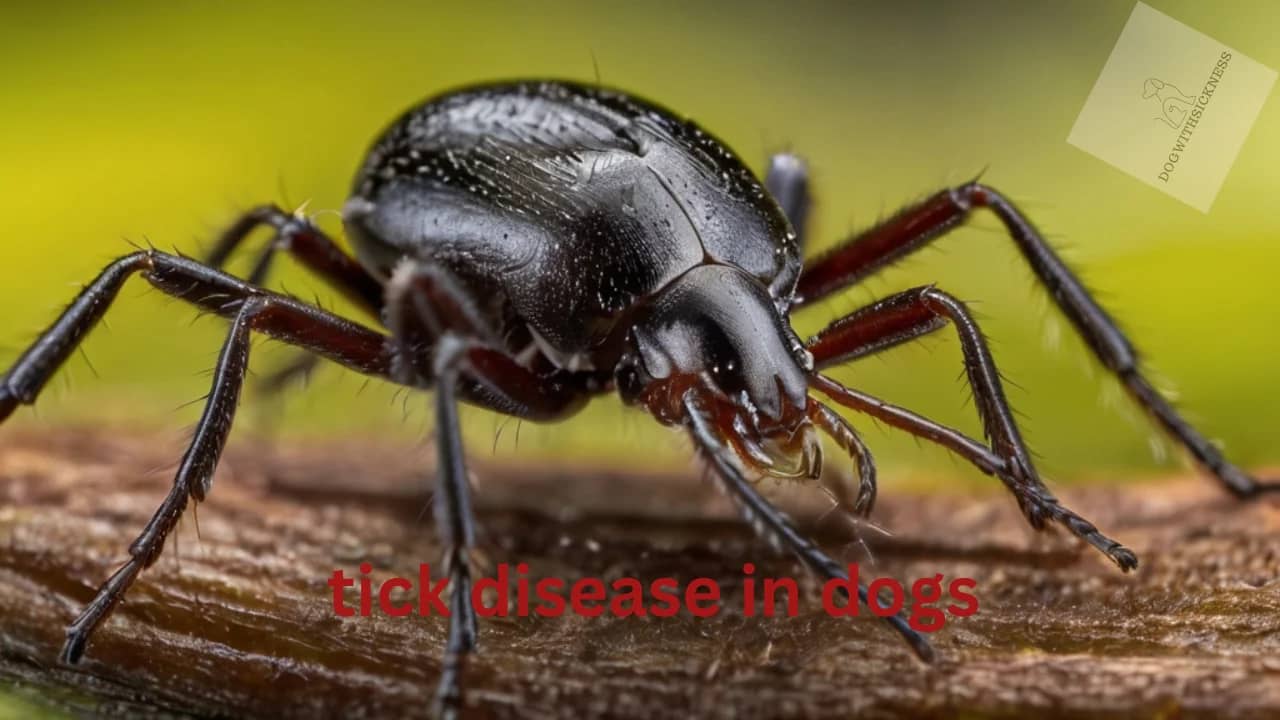Introduction:-
First and foremost, we will discuss ticks and how they are harmful to your dog’s health as well as to humans. Ticks are parasites that may cause a variety of serious tick-borne diseases if they come into touch with your dog.
Now I am going to discuss some major kinds of tick diseases in dogs:
Ehrlichiosis:
It Can lead to death if not treated properly owing to internal bleeding.
Anaplasmosis:
Platelets gradually decrease, and veins in your dog’s skin might break and bleed, resulting in organ and respiratory failure.
Bartonellosis:
It can harm several organs, including the heart and liver.
Lyme Disease:
If not treated properly, this bacterial infection can severely damage the kidneys and even lead to death.
“The objective of the blog is to make pet owners aware of how dangerous ticks may be for dogs if handled carelessly”
What are ticks:-
They belong to the same family of spiders, scorpions, and mites. Adult ticks have eight legs and oval bodies, and they are divided into two main parts head and body. There are two kinds of ticks: hard ticks and soft ticks. Ticks are parasites that grow by consuming the blood of mammals, birds, and reptiles. Ticks insert their mouth inside the host’s body and feed for several days or weeks.
The main kinds of ticks:
- American dog tick
- Brown dog tick
- Black-legged tick
- Loner star tick
- long-horned tick
How Do Dogs Get Ticks?:-
If your dog enjoys playing outside at the park or even in your backyard, he or she is a prime target for ticks. Ticks are commonly found in greenish and wooded environments. You must scan the complete body of the dog after returning home from such kinds of places and it is preferable to use a magnifying lens when scanning.
What if my dog gets ticked:
- It would be best if you used a magnifying glass to look; otherwise, some ticks are so tiny that they are difficult to spot with the naked eye. If you notice that anything is moving, there’s a chance that a tick has attached itself to your dog’s body.
- When you are sure, gather all the things that are important for removing ticks and after removing like, tweezers, a towel with warm water, and antiseptic
- Grasp the tick as close as the skin surface with tweezers without pinching your pet
- Pull it out slowly without jerking or twisting, since even the smallest error might result in a larger charge. If you jerk or twist, it’s possible that the tick’s body will come out but not its head, which could lead to disease as previously discussed.
- After removing the tick clean the affected area with a towel and antiseptic remember the date of removal and notice your dog’s behavior it may happen that your dog can show symptoms of infection in 3 to 4 days.
Symptoms of tick-borne disease:
Most borne diseases have similar symptoms:
- Fatigue.
- Headache.
- Lameness.
- Joint stiffness.
- Tiredness.
- Skin rashes and bumps.
- Difficulty breathing.
- Lethargy.
- Loss of appetite, etc.
- Treatment of tick-borne disease:
Treatment of tick-borne disease infection:-
The vet can prescribe broad-spectrum antibiotics for 3-4 weeks, but these antibiotics can also kill the important bacteria in your body to address this issue. The vet can also prescribe probiotics, which can also manage gastrointestinal issues.
If you feel that your dog is recovering, it is good, but you need to do regular checkups and tests according to your vet because tick-borne disease does not go away easily.
How can I prevent my dog from getting ticks?:-
- The greatest preventive measure is to inspect your dog’s entire body after returning from greener and forested areas. There are different tick prevention solutions on the market; after using such items, the odds of ticks attaching to you would be reduced; nevertheless, there is still a risk that a tick might attack your pet.
- Use these types of items after gathering information on which tick disease in dogs is common in your area because different products are created for different types of tick prevention.
FAQ’s:-
What to do if my dog has a tick?
Grasp the tick as close to the skin surface with tweezers without pinching your pet.
What happens if you don’t remove a tick from a dog?
If you do not remove the tick can cause Lyme, Ehrlichiosis, Anaplasmosis, Bartnollesis, and Rocky Mounted Spotted. Fever.
Is a tick on a dog harmful?
Yes, it can result in dangerous illnesses for your dog’s health.
Can I touch a dog with ticks?
You can, but it’s best to wear gloves before petting your dog. Ticks are not dangerous to touch, but they can transmit numerous severe diseases if attached to both canine and human skin.
Will a dog be OK after a tick bite?
Many tick-borne infections have no symptoms in the first few months, but after that, they begin to develop symptoms, which can be fatal if not recognized early.
Do ticks lay eggs on dogs?
Yes, if they attach to your dog and are not removed, they can lay eggs, which develop into larvae that can feed on your dog.
Sources:
Centers for Disease Control and Prevention.
